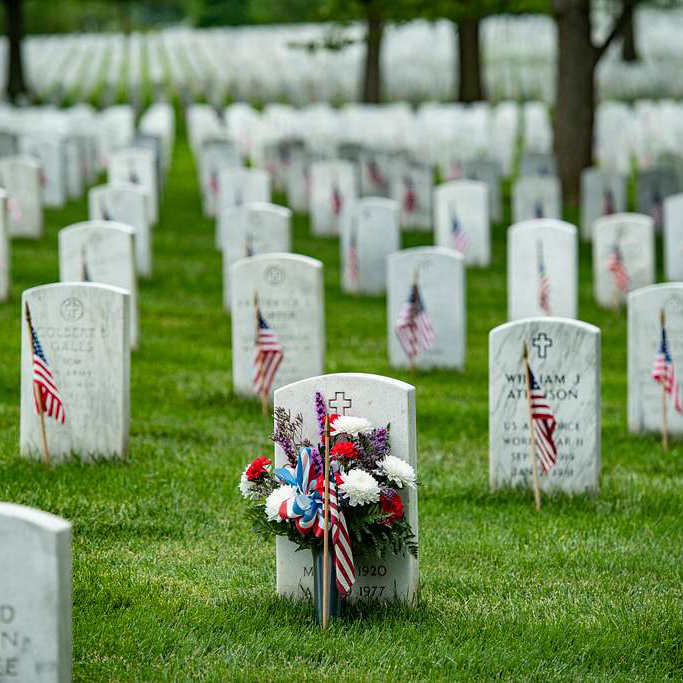Originally celebrated every May 30th, since 1971 the United States has observed Memorial Day on the last Monday of May. People observe the holiday in many ways, one of which is decorating the graves and memorials of those who died while in military service to our nation. People place flowers, plants, and United States flags on graves of the fallen, and volunteers mark all the graves in our national cemeteries with a flag.

One of the most important antecedents of modern Memorial Day was a Decoration Day organized by freedman’s relief organizations and formerly enslaved people in Charleston, South Carolina, on May 1, 1865. One of several celebrations to mark the end of the war, the event was organized by the African American citizens of Charleston to mark and decorate the graves of the 257 Union prisoners who died at the Charleston Race Course, which had been converted to a Confederate prison. Thousands of freedmen, including almost 3,000 black schoolchildren, gathered to decorate the graves with flowers and beautify the graveyard, building an enclosure and an arch labeled “Martyrs of the Race Course” in what is now Hampton Park. Many consider this event the first Memorial Day.
In the years following the Civil War, unofficial celebrations like Charleston’s were held across the country as hundreds of thousands of soldiers were laid to rest. Mary Ann Williams is credited by some with the idea of honoring fallen soldiers on both sides of the war by placing flowers on their graves. She wrote letters to local newspapers urging people to adopt the “idea of strewing the graves of Civil War soldiers—Union and Confederate” with flowers.
Celebrated as Decoration Day in 1868, the first proclamation of the holiday now known as Memorial Day was made by Commander in Chief John A. Logan of the Grand Army of the Republic to honor Union soldiers who had died in the Civil War.
New York made it an official state holiday in 1873, and several states followed their lead. By 1890, every state had made it an official holiday. By the 20th century, Union memorials that were celebrated on different days were merged, and Memorial Day was eventually extended to honor all Americans who fought and died while in the U.S. military service. In 1971, the US Congress made it a federal holiday. It is now held on the last Monday in May.
Memorial Day is also considered to be the “unofficial start of summer.” Many Americans still visit family gravesites with flowers on the last weekend in May, although for many, the holiday has come to mean the beginning of summer, cookouts, and a day to spend relaxing with loved ones.








